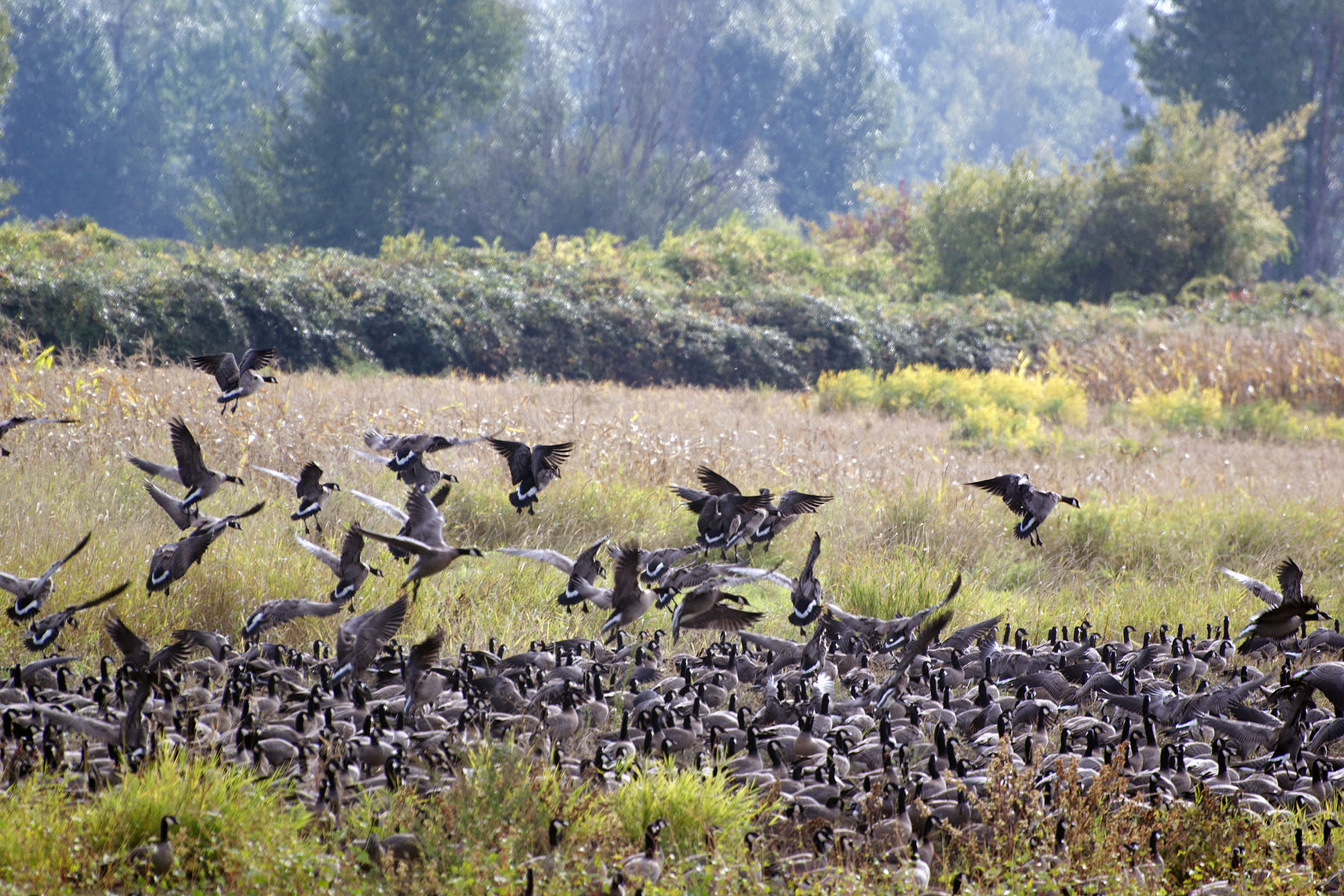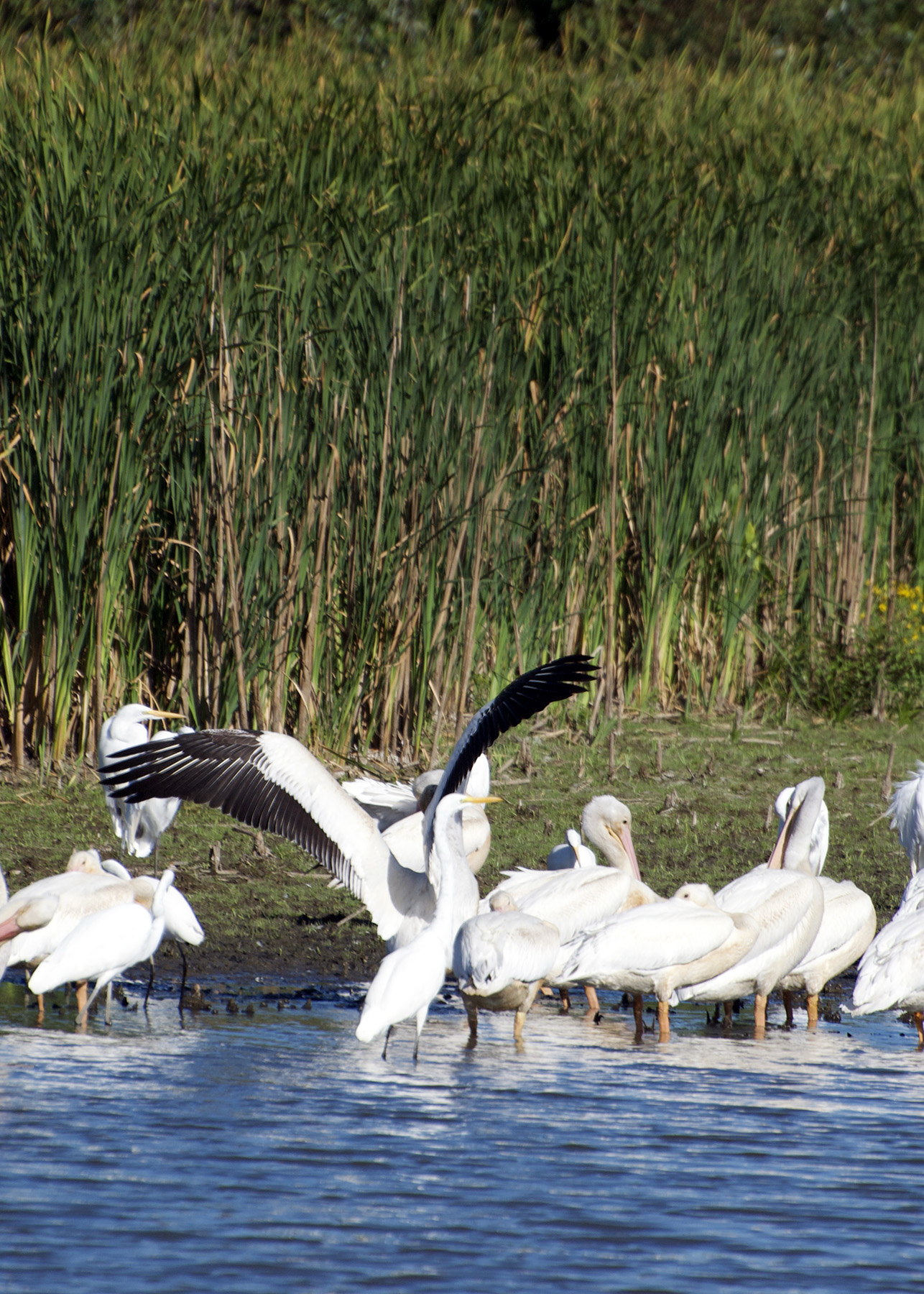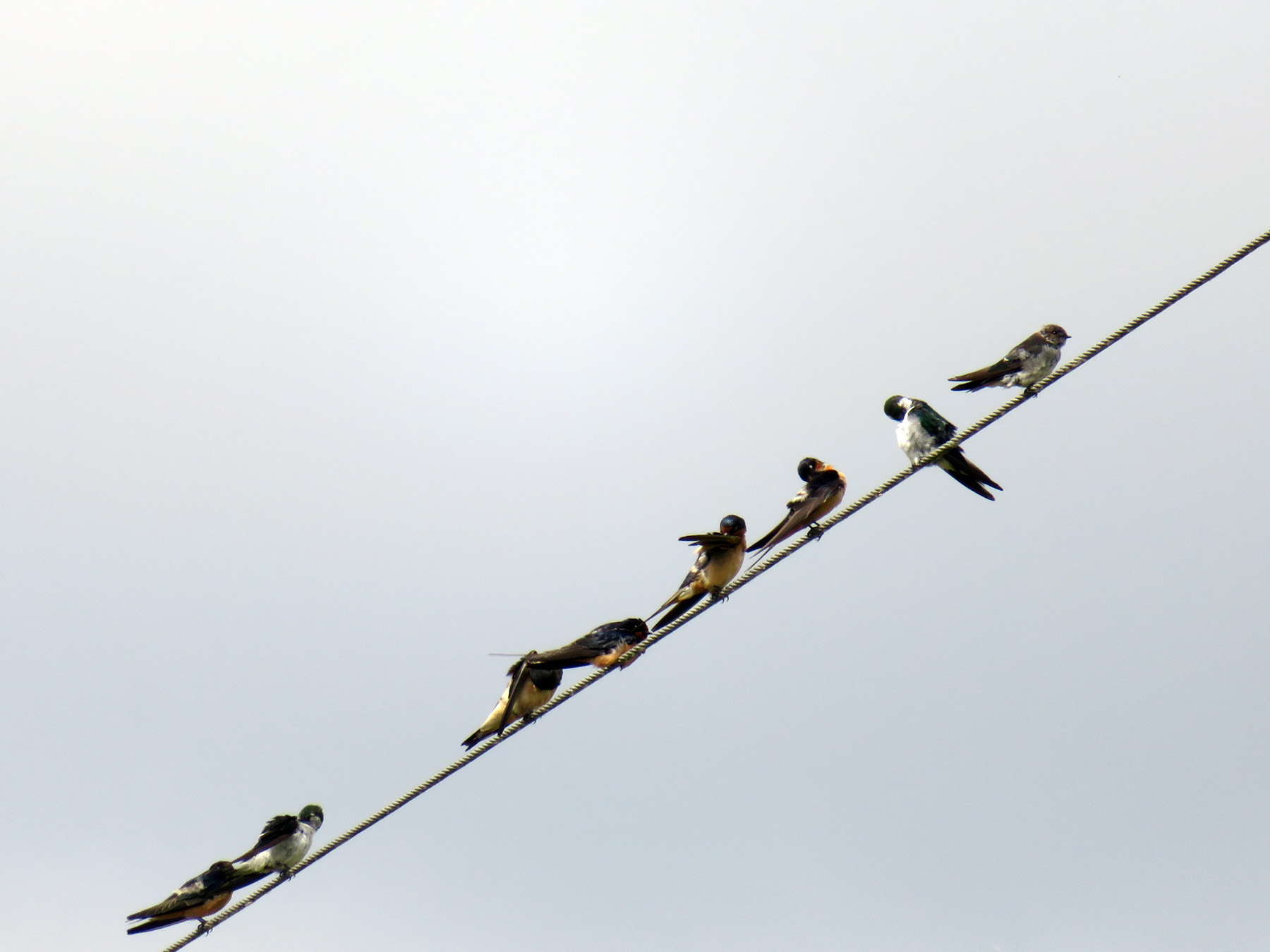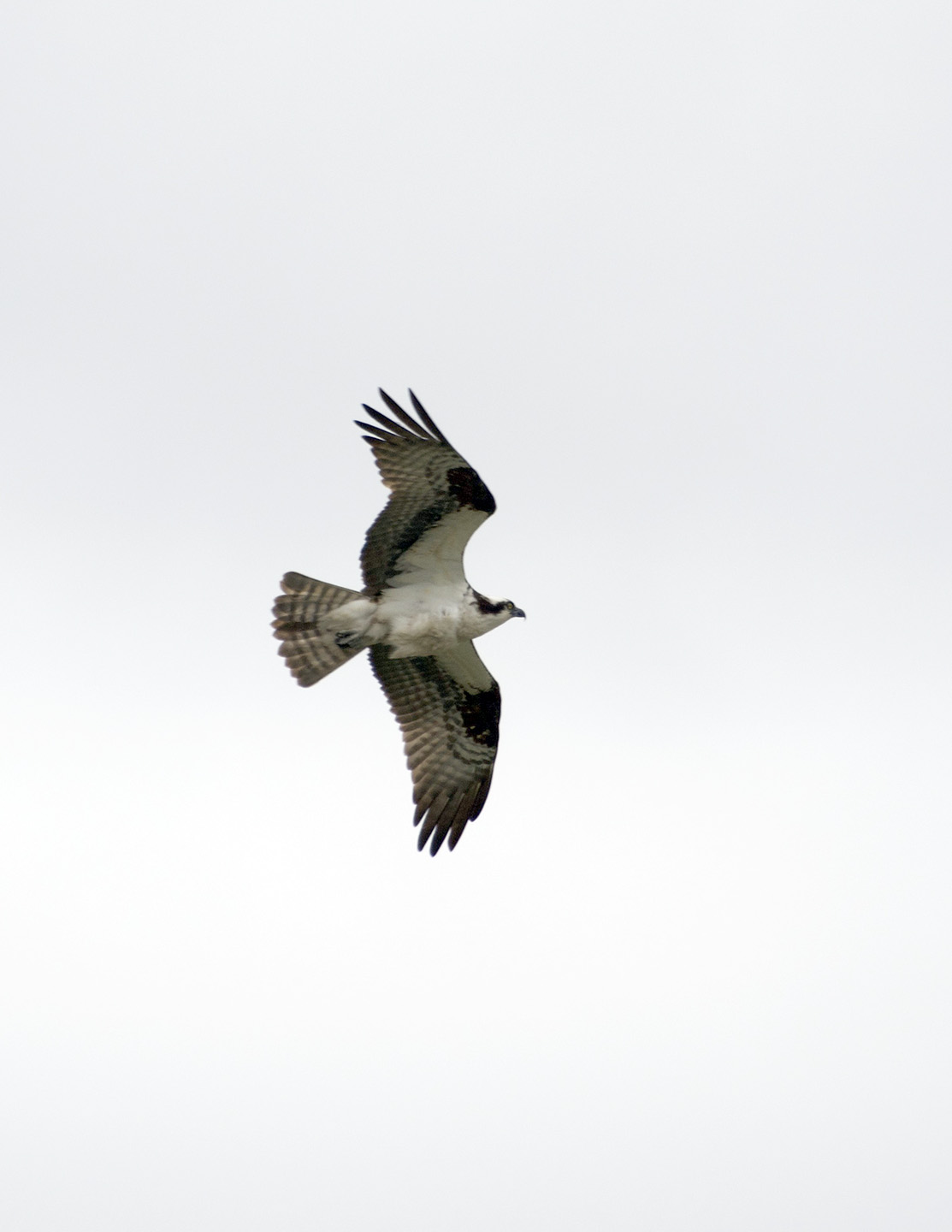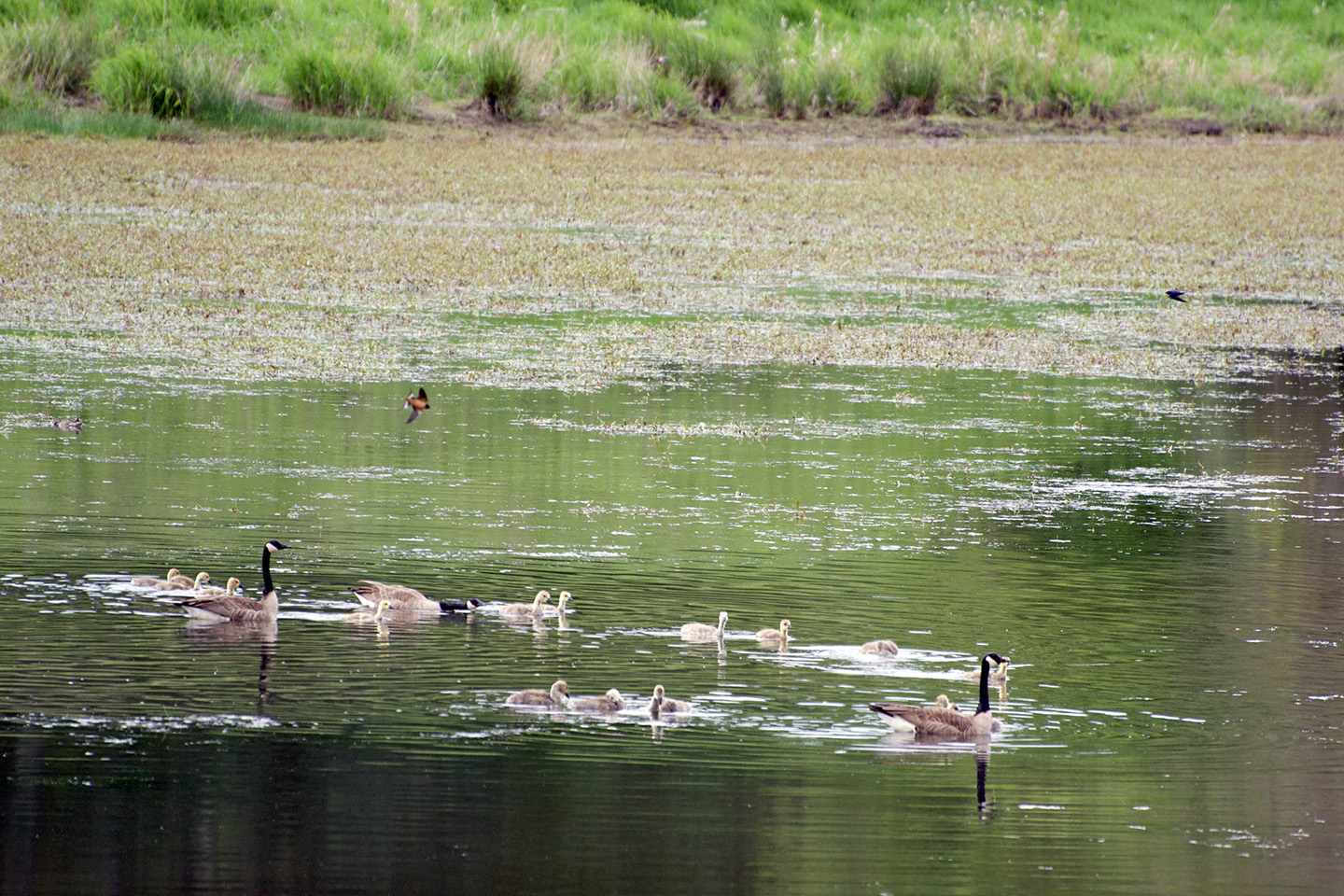It. Was. Insane. On a single early morning walk, less than two hours long, I saw more birds coming and going, resting, feeding, or just passing through, than I would usually photograph in a whole month. It was the first day after a few days of rain, the light ever shifting with clouds still lingering, and the noise in the air was a cacophony.




There were geese. Sandhill cranes. Ducks. Pelicans. Red-tailed hawks. Bald eagles. Kestrels. Egrets. Finches, sparrows, jays and red-winged blackbirds. All concentrated in one area where water was to be had – so much of the island’s ponds and canals are still empty elsewhere due to the drought. By the time it was around 10 a.m. lots of other people appeared, often looking from their cars on a one-lane road where I walked, so I was ready to get out. Mixed feelings. I love being alone out there, but I also appreciate when large numbers of people take an interest in nature and enjoy it, however it works for them.



Which brought my thoughts to a somewhat related topic, environmental concerns – you guessed, didn’t you? Oh, to be predictable… A slight variation, though. I came across an insightful and smart essay by an author who specializes in reviewing children’s literature. (Alas, only in German, which is why I’ll summarize in English. For my German readers: Christmas is coming, all the kids need books!) Julia Bousboa has a website with reviews and a fun podcast together with a friend where new children’s literature leads to sometimes surprising discussions.
Back to nature, or more precisely the environment under climate threat, or the real topic: the way children are encouraged to be our saviors. Bousboa lists a plethora of Children’s books starting at age three that try to persuade kids to be climate heroes and save the world. There are scores of biographic books about Greta Thunberg, there are non-fiction books about climate change and sustainability, and there are books that ask kids to become involved in protecting our planet, and doing the right thing.


The advice given has not changed much since the 1980s – save electricity, avoid flying or vacations abroad, bike to school, take short showers, wear sweaters instead of overheating the house, and buy local food, preferably organic and avoid meat. Bousboa notes correctly that these admonitions really fall within a decision-making pattern for the middle- and upper classes, who can decide where to spend a vacation, who have cars that could be used less and who have the economic means to buy more expensive food. A convincing observation that was new to me also argued that the appeals will only convince those who have learned since early childhood “that their voice counts and that they will be heard. For a lot of kids (and their parents) that is not true due to their origins.”



While fully acknowledging that it is a good thing to familiarize children with the climate crisis and instill a love for nature that will eventually make them stewards of our planet, the author wonders about the justice of burdening young individuals with obligations that are really those of politics and international corporations, the real culprits when it comes to earth’s destruction. This parallels the argument made for adults: Individuals can at most be responsible for their own behavior, but governments have the power to implement legislation that compels industries to act sustainably, given the planetary-scale of the threat. But for kids there is an additional reason not to be convenient scapegoats for corporations that deny their own responsibilities:
“Kinder und Jugendliche sollen lesen und lernen und spielen, sich mit ihren Freund*innen treffen, Quatsch machen, sich ausprobieren, groß werden und dabei ganz selbstverständlich ein Gefühl für ihre Umwelt entwickeln, vom Regenwurm bis zu den Mitmenschen. Doch bei all dem müssen sie Kinder sein dürfen und keine Held*innen. Sie sind zu klein, um die Welt zu verändern. Kinder sollen die Erde retten? How dare you? Das müssen doch wirklich wir Erwachsenen übernehmen!”
“Children and youth should read, learn and play, hang out with their friends, clown around, try on new roles, grow up and of course grow awareness of the environment, from earthworm to fellow wo/men. Through it all they should be allowed to be kids, not heroes.They ARE too small to change the world. Children shall save the earth? How dare you? It is truly the responsibility of adults!”
Couldn’t agree more.



Music is a perennial favorite. Here’s the Children’s Corner by Debussy.

